Performance Workshop EummaGangkkang carries on the tradition of Korean puppet theater while incorporating contemporary elements to expand and popularize the long-standing art form. The troupe is also overcoming the physical limitations of traditional puppetry by developing new puppets with greater expressive range and mobility.
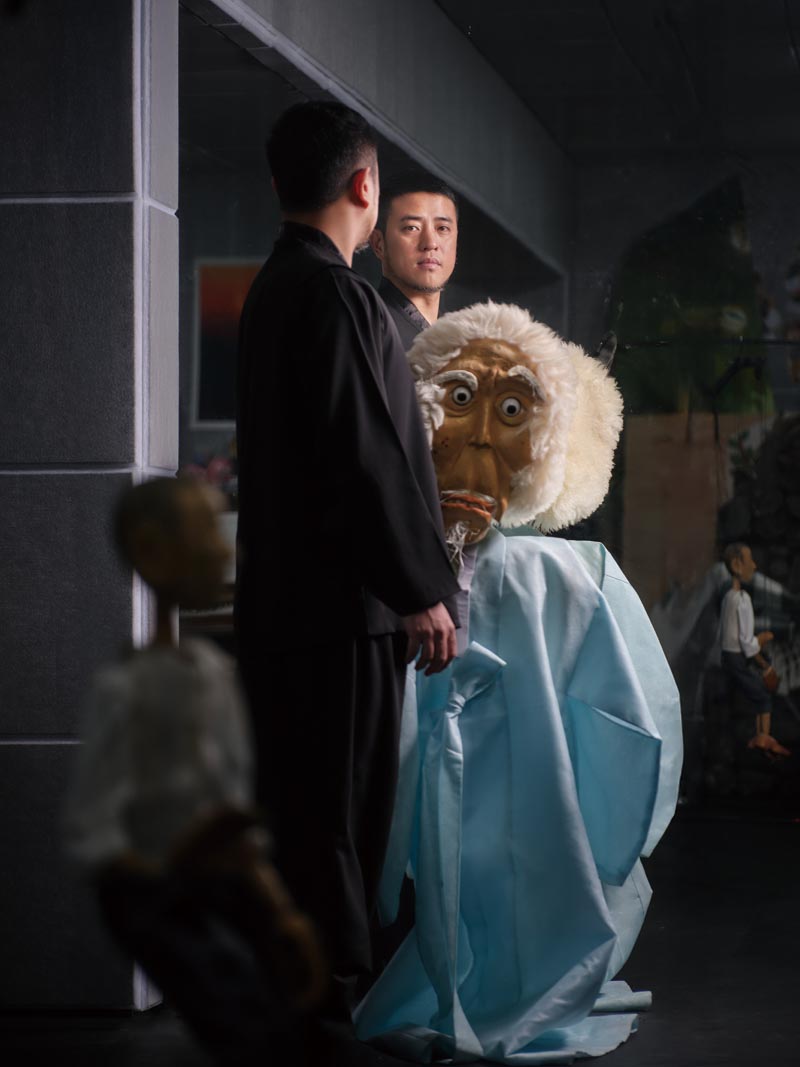
Kkokdugaksi-noreum is the only surviving form of traditional Korean puppet theater. Eum Dae-jin, a certified trainee in the art of Namsadang-nori and leader of the traditional performing arts troupe EummaGangkkang, carries on the legacy by creating puppets, writing scripts, and directing performances.
Kkokdugaksi-noreum, traditional Korean puppet theater, is comparable to Europe’s marionette theater and Japan’s Bunraku. It is a core element of Namsadang-nori, a folk performance once presented by troupes of male itinerant performers. The full performance generally comprises six acts: pungmul, farmers’ percussion music and dance; beona, plate spinning; salpan, acrobatic stunts; eoreum, tightrope walking; deotboegi, mask dance-drama; and deolmi, a puppet play. The term “deolmi,” referring to traditional puppetry in general, originates from mok deolmi — the back of the puppet’s neck, which the puppeteer grips to manipulate its movements. Depending on the name of the lead character, the play is sometimes called “Park Cheomji-noreum” or “Hong Dongji-noreum.”
Kkokdugaksi-noreum remains significant not only for its artistic qualities — music, dance, and acrobatic elements — but also for its poignant social commentary. Its characters represent archetypes from various social classes: the yangban aristocrat and the rebellious servant; an old couple and the husband’s mistress; a monk who succumbs to worldly pleasures, and commoners suffering from endless oppression and exploitation. Beyond simple entertainment, the play delivers a satirical critique of social injustice — particularly the hardships endured by women in a rigidly patriarchal and hierarchical society — while advocating the ideals of gender equality and human dignity.
MIRROR OF SOCIETY
Kkokdugaksi-noreum is performed on an elevated stage supported by four pillars and covered with cloth. The puppeteer, or daejabi, sits inside the covering and manipulates the puppets, which are mounted on rods. Only the upper half of the puppets are visible to the audience. Because the puppeteer sits inside the covering and cannot see the audience’s reactions, they rely on cues from the sanbaji, or interlocutor, who sits in front of the stage. Usually one of the musicians, the sanbaji engages in dialogue with the puppets throughout the performance. Over the course of roughly an hour, the daejabi and sanbaji carry the show with sharp banter and audience interaction, blurring the boundary between stage and spectators.
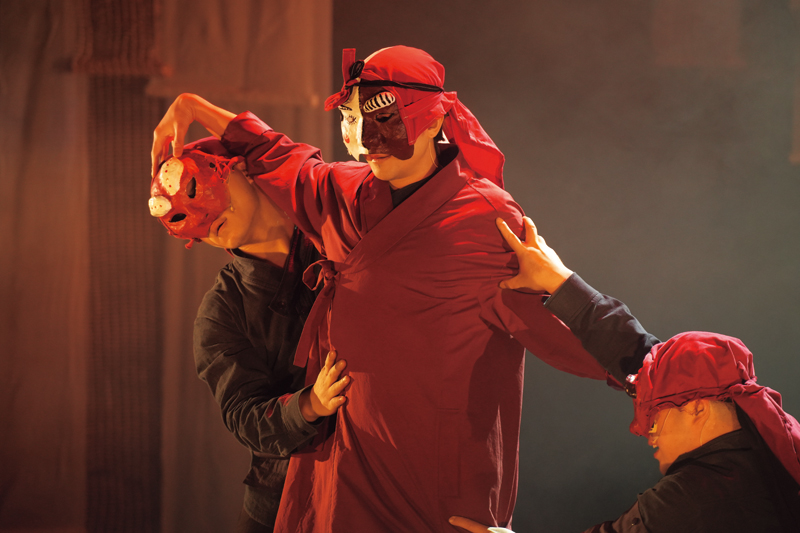
A scene from Jeol daemok (Temple Builder). In this play, which blends traditional performance art and architecture, a Buddhist temple is constructed and then torn down to explore human desire, agonies, and eventual enlightenment.
© EummaGangkkang
Yi Gyu-bo (1168–1241), a poet and official from the Goryeo Dynasty (918–1392), recorded his impressions of a puppet play in his poem “Gwannong hwanyu jak” (meaning “composed after watching a puppet play”). Although it is uncertain when the scripts for Kkokdugaksi-noreum were first created, Yi’s poem confirms that this type of puppet theater existed as early as the Goryeo period. While scripts vary, most consist of seven to ten scenes following the life of the protagonist, named either Park Cheomji or Hong Dongji. They depict the joys and sorrows of ordinary people, satirizing societal disorder and exploring spiritual salvation beyond religious boundaries.
Though it nearly vanished during the Japanese colonial period, Kkokdugaksi-noreum was revived after being designated as Korean National Intangible Cultural Heritage in 1964. In 1988, the remaining five acts of the larger Namsadang-nori were also added to the heritage list. And in 2009 the complete repertoire of Namsadang-nori was inscribed on UNESCO’s Representative List of the Intangible Cultural Heritage of Humanity.
A NEW INITIATIVE
EummaGangkkang is a leading troupe in both the crafting and performance of traditional Namsadang-nori puppets. In this context, “eumma” means “to shape sound into music,” while “gangkkang” mimics the clang of a blacksmith’s hammer. Aiming to overcome the expressive limitations of traditional puppets, the group has developed new figures capable of a broader range of expressions and movements, offering a contemporary reinterpretation of an age-old art.
EummaGangkkang was founded in 2016 by puppeteer and puppet maker Eum Dae-jin, along with six fellow graduates from the School of Traditional Arts at the Korean National University of Arts. The troupe has since grown to 18 members, including puppet makers, artistic directors, producers, composers, designers, and performers.
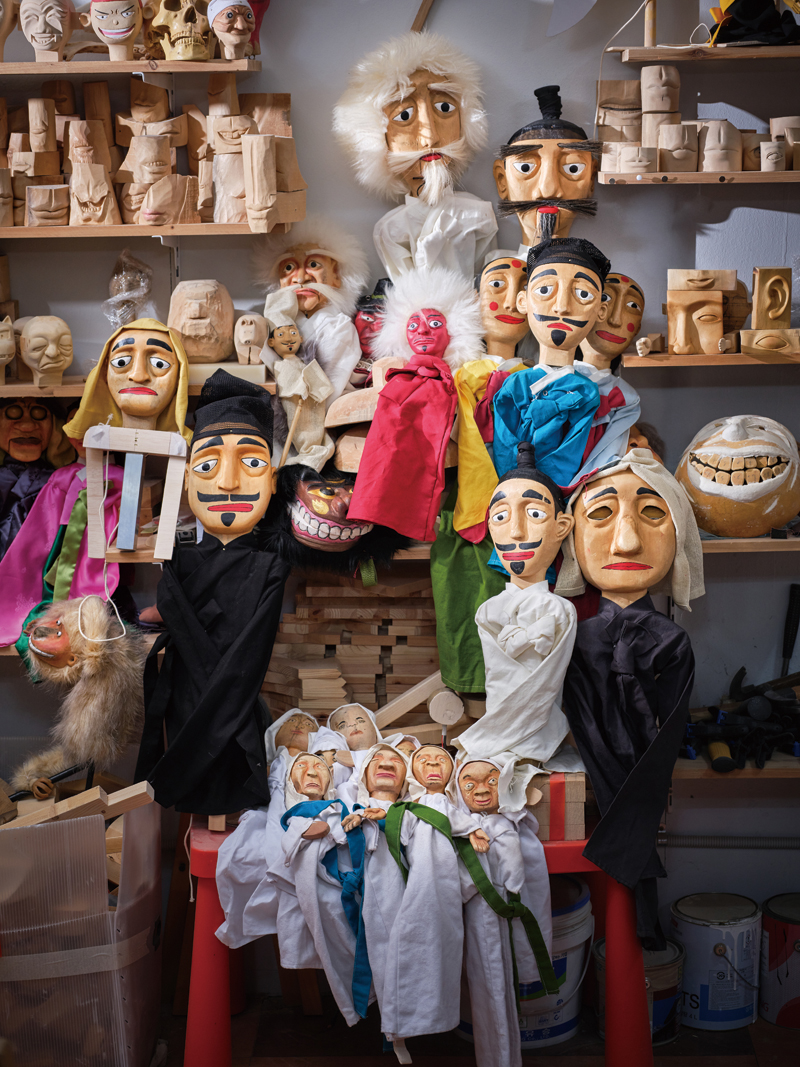
Rows of puppets line a corner of the EummaGangkkang workshop. Even without elbows and lower bodies, they are capable of displaying a wide range of motions depending on how they are held and manipulated.
“As a troupe specializing in deolmi, it has been our principle from the start to always incorporate traditional elements into our original productions,” says Eum. “We make sure to include at least one element of traditional puppetry, while maintaining the interplay between daejabi, sanbaji, and the audience. For instance, we might introduce a deolmi puppet into a marionette show, or feature a sanbaji character in a tabletop performance.”
Eum is a certified trainee in the art of Nam-sadang-nori. He showcases distinctive object theater performances, for which he crafts not only deolmi puppets but also hand puppets and marionettes. To this end, he has sought out and learned from puppet specialists in the United States, Russia, Japan, Vietnam, Indonesia, and other countries.
Kkokdugaksi-noreum typically includes a scene in which a Buddhist temple is constructed and then torn down. To portray this in convincing fashion, Eum studied traditional timber construction and even took part in actual temple construction to learn the techniques firsthand. Drawing on this experience, EummaGangkkang staged its original production Jeol daemok (Temple Builder) in 2023, earning critical acclaim and marking a turning point for the troupe.
“Deolmi puppets have no elbows or lower bodies, yet skilled puppeteers can bring them to life with remarkably varied movement,” Eum explains. “Their dancing, accompanied by music, may appear rough, but it has a unique beauty.”
Since deolmi plays are a mix of scripted lines and improvision, they inspire strong emotional engagement among the audience.
“During shows, I often see how the audience project their emotions onto the puppets. When the stage covering is drawn and only the puppets are visible, people focus entirely on them. Even when puppeteers remain in view, the emotional connection still follows the puppets. Many viewers are moved to tears, even though they’re watching wooden figures,” Eum says.
Eum believes the true magic of puppet theater lies in its ability to evoke fantasy in a way that may elude human actors.
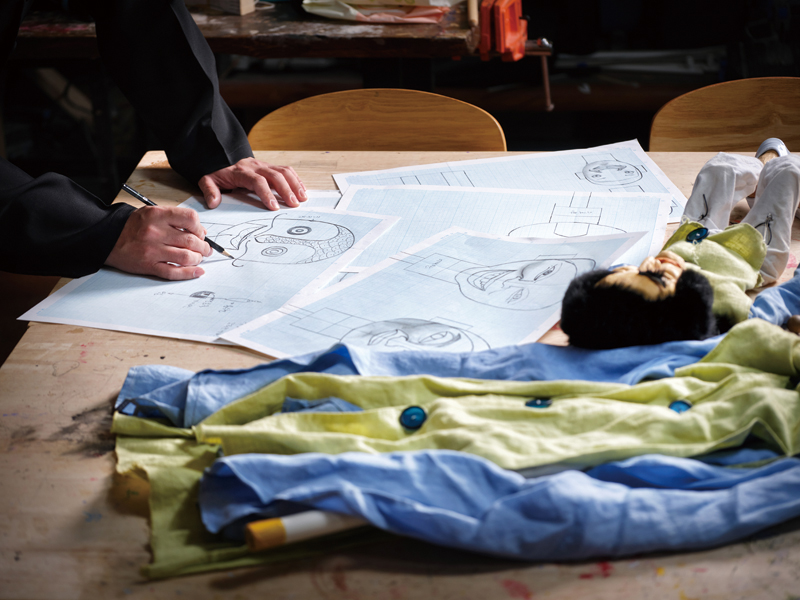
Eum sketches designs for deolmi puppets. Each puppet has a unique look shaped by gender and personality traits, which Eum expresses by consulting traditional texts on physiognomy.
INTERNATIONAL RECEPTION
EummaGangkkang gained significant international recognition with their 2020 production of Kkokdugaksi Play (Kkokdugaksi-geuk), a modern staging of a traditional puppet play from Jangyeon, Hwanghae Province (in modern-day North Korea). The work was praised both for its faithful reconstruction of the original folk puppets and its creative adaptation of tradition to modern sensibilities. It has since been staged annually as part of the troupe’s regular repertoire.
“A transcribed script of Kkokdugaksi-noreum from Jangyeon was preserved. Based on six illustrations found in that script, we reconstructed 29 puppets,” Eum says.
The production of a puppet play sometimes begins with the script; other times, the puppets come first and the story unfolds from there. In the latter case, gender, personality, and other traits are incorporated into the design process, often with reference to traditional literature on physiognomy. Distinctive features are emphasized through deliberate design choices — for example, a crooked nose to suggest a devious personality, or a big mouth to indicate a talkative character. Once the rough sketches are complete, they are transferred onto graph paper, then glued onto wooden boards and carved into shape.
“Deolmi puppets are carved as a single piece from the head down to the handle,” Eum explains. “First the outline is cut out and then the details, starting from the nose. If the mouth or eyes are designed to move, the full face is completed first, and then the back of the head is hollowed out. Next, the shoulder plates and arms are made, followed by the costume. Sometimes, actual garments worn by people are repurposed for the puppets.”
In May 2024, EummaGangkkang staged an omnibus production featuring three signature works at the KykLab Theater in Moscow. This sold-out event — the first Korean puppet show in Russia — was particularly notable for being organized independently, without any institutional funding.
“Last October, after our performances in Moscow, we participated in Incanti, an international puppet theater festival held in Turin, Italy. There, we presented selections from Kkokdugaksi-noreum. The enthusiastic response from international audiences showed us the global potential of Korean puppet theater,” Eum says. His dream now is to see deolmi gain global recognition as a Korean cultural icon.
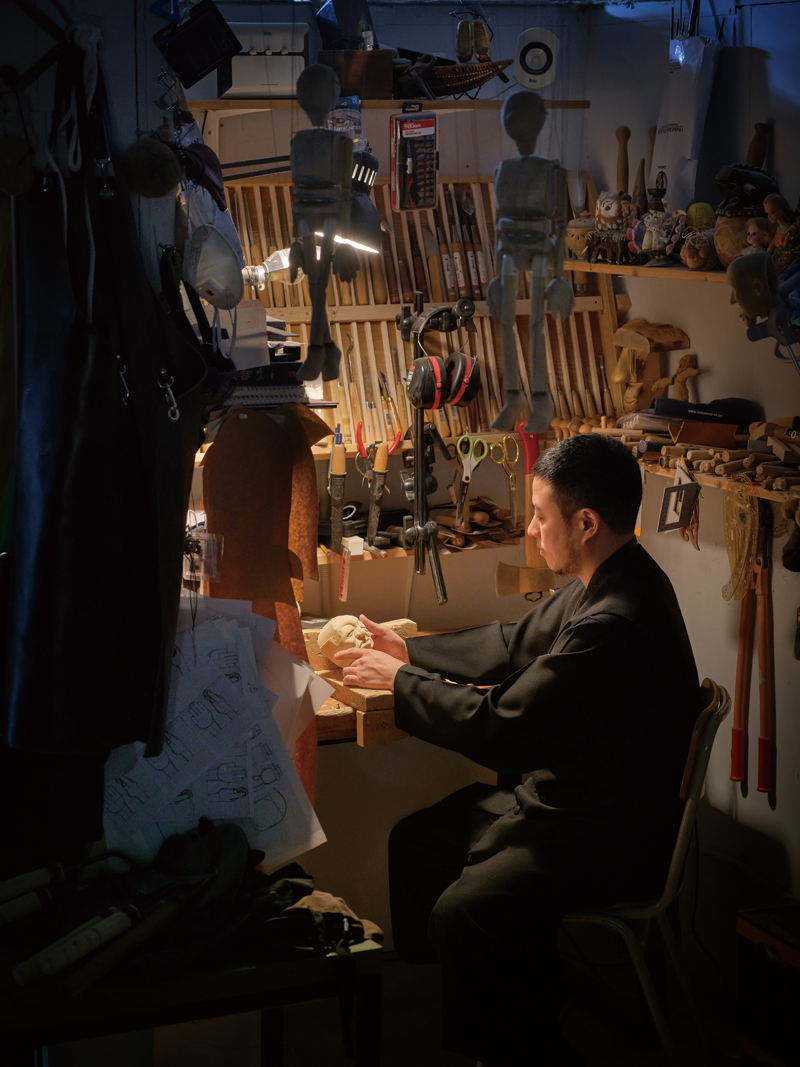
Eum’s workspace is filled with masks, props, and other stage tools, all of which he handcrafts himself. Initially, producing a single puppet took over two months, but now that he’s mastered the process it only takes a few days.